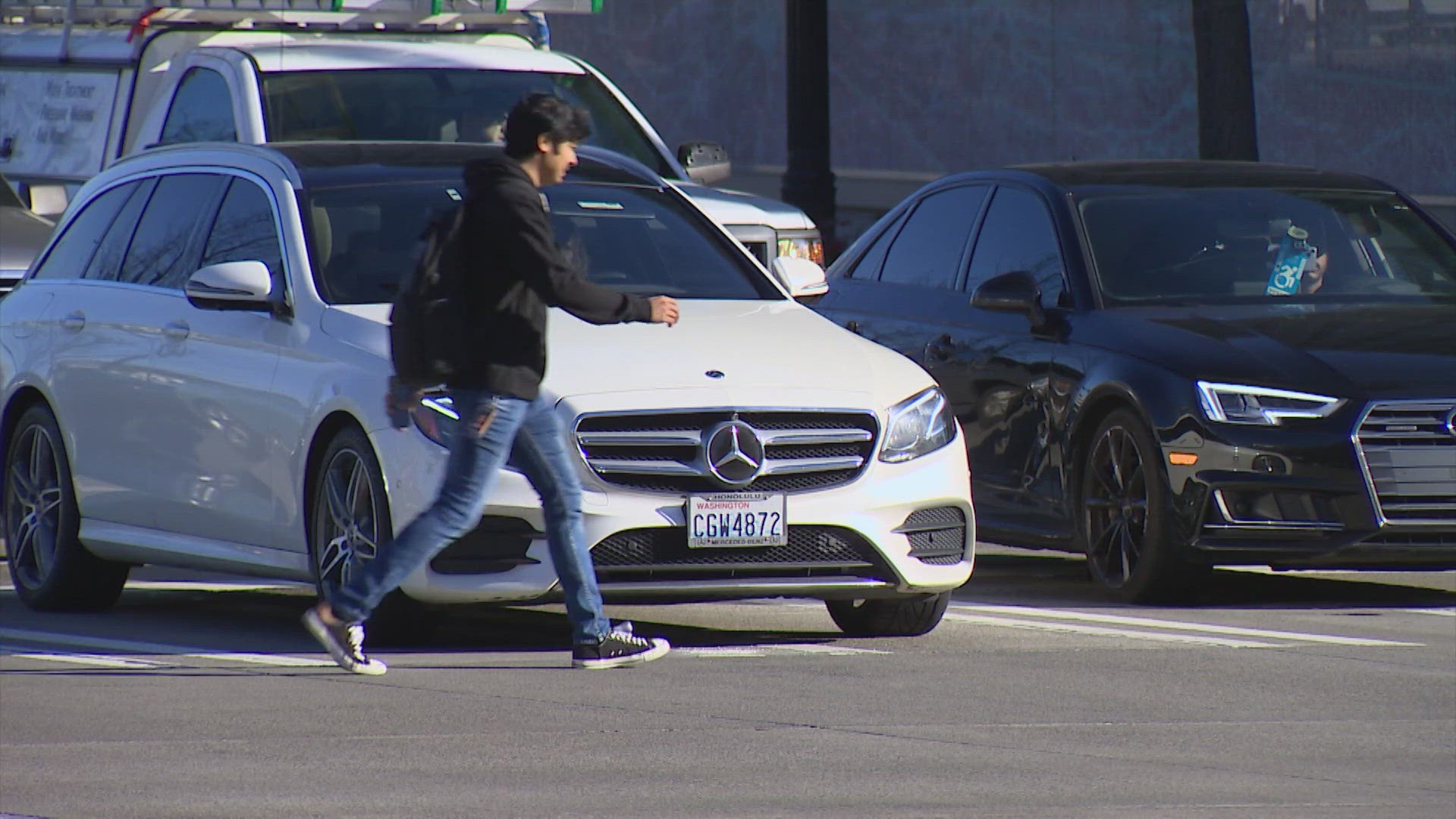SEATTLE — Traffic is something everyone has a complaint about and now here’s your chance to share yours. KING 5 is launching a new traffic series titled "Send Shanté."
Viewers can send a traffic-related issue to anchor Shanté Sumpter and she will investigate the issue.
King 5 viewer Tyler Kennedy sent this message:
“Cars blocking the box at 9th and Mercer! I bike or walk home from work and am nearly hit every other day trying to cross Mercer. Cars are always trying to sneak through the light, getting stuck in the intersection blocking the crosswalk and bike lane, and then when traffic moves they roll through without seeing pedestrians trying to cross with their light. There’s also a traffic cop on this corner that is never doing anything to help traffic.”
Shanté went to the area and didn’t have trouble finding other people experiencing the same issue.
“You just have to be careful,” said Lucas Silvas. “There's no enforcement and it's a difficult area to cross and so you just have to be careful that's just the reality.”
Silvas usually walks or bikes through 9th and Mercer in Seattle’s South Lake Union neighborhood. During rush hour, he says crossing the intersection is like navigating a maze.
“It’s been really unfortunate, because the traffic really blocks on the turns, and then afterwards. So, it's quite dangerous because you end up walking in between the trucks. It's a multi-lane road here. As cars pull up behind the trucks, they don't see you as a pedestrian or as a biker. I've had a couple of really dangerous incidents here where people or myself almost got run over,” said Silvas.
Within about 15 minutes of standing at the corner, we noticed the pattern of drivers blocking the crosswalk with every light signaling a left turn on Mercer.
“If you're traveling around 9 a.m. it's pretty bad. 4:30 or 5:30 p.m., I don't know if there hasn't been one day when it's not the case. You're trying to walk and it's this confusion and hesitation,” said Silvas.
In 2022, the city launched a program to use cameras at 8 intersections to automatically ticket drivers who block crosswalks, intersections, and bus lanes. At the time the city said those spots had a history of repeat violations. (insert picture)
Although several locations on Mercer were considered, those cameras are not in the area. We asked the city why.
“Given the timeline of the pilot, we wanted to install these applications where we can use existing infrastructure to place these cameras,” said Venu Nemani, the Seattle Department of Transportation's (SDOT) Chief Transportation Safety Officer. “We didn't want to install any new poles or any other means. So that's the reason why we could not move forward with Mercer, we were able to move forward with other locations.”
Nemani says once the city gets the data from the cameras they could pick additional locations.
“What we are focused on right now is to develop a more comprehensive policy for safety cameras, and that would guide us (through) all our future decisions,” said Nemani.
In April, the city added two more block-the-box cameras at Denny/Stewart/Yale and Boren and Howell intersections.
With no immediate plans for a camera at 9th and Mercer, Silvas hopes to see more patrols in the area to enforce block-the-box rules.
“I’ve never seen a police car on here trying to do anything about it. Even though I go here like every day of the week. I would love to see more enforcement,” said Silvas.
Seattle Police did not say if patrols are occurring at 9th and Mercer, when asked a spokesperson said, “We cannot discuss the allocation of officers and the exact locations they are deployed.”
SDOT plans to complete the pilot program by the end of the year. In 2023, 6,862 warnings were issued along with 585 $75 citations.
According to the city, the pilot study requires 50% of the revenue generated to go back to the state. The other half stays with the city to improve ADA access for physically challenged pedestrians at various intersections.

